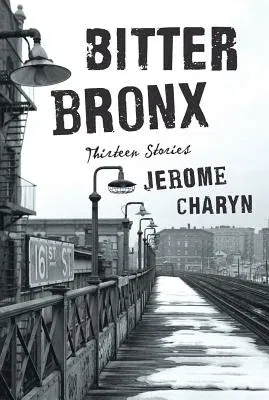In Bitter Bronx, one of our most gifted and original novelists depicts
a world before and after modern urban renewal destroyed the gritty
sanctity of a land made famous by Ruth, Gehrig, and Joltin' Joe.
Bitter Bronx is suffused with the texture and nostalgia of a lost time
and place, combining a keen eye for detail with Jerome Charyn's lived
experience. These stories are informed by a childhood growing up near
that middle-class mecca, the Grand Concourse; falling in love with three
voluptuous librarians at a public library in the Lower Depths of the
South Bronx; and eating at Mafia-owned restaurants along Arthur Avenue's
restaurant row, amid a land of deprivation...where fathers trundled
home...with a monumental sadness on their shoulders.
In Lorelei, a lonely hearts grifter returns home and finds his childhood
sweetheart still living in the same apartment house on the Concourse; in
Archy and Mehitabel a high school romance blossoms around a newspaper
comic strip; in Major Leaguer a former New York Yankee confronts both a
gang of drug dealers and the wreckage that Robert Moses wrought in his
old neighborhood; and in three interconnected stories--Silk & Silk,
Little Sister, and Marla--Marla Silk, a successful Manhattan attorney,
discovers her father's past in the Bronx and a mysterious younger sister
who was hidden from her, kept in a fancy rest home near the Botanical
Garden. In these stories and others, the past and present tumble
together in Charyn's singular and distinctly New York prose,
street-smart, sly, and full of lurches (John Leonard, New York Times).
Throughout it all looms the master builder Robert Moses, a man who
believed he could save the Bronx by building a highway through it,
dynamiting whole neighborhoods in the process. Bitter Bronx stands as
both a fictional eulogy for the people and places paved over by Moses'
expressway and an affirmation of Charyn's brilliant imagination
(Elizabeth Taylor, Chicago Tribune).

